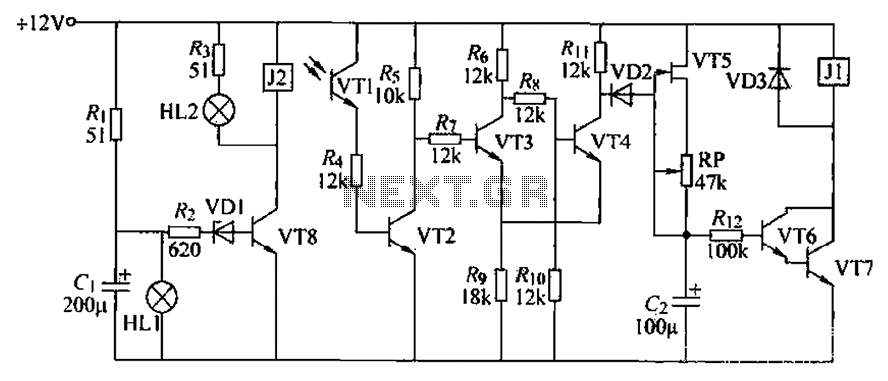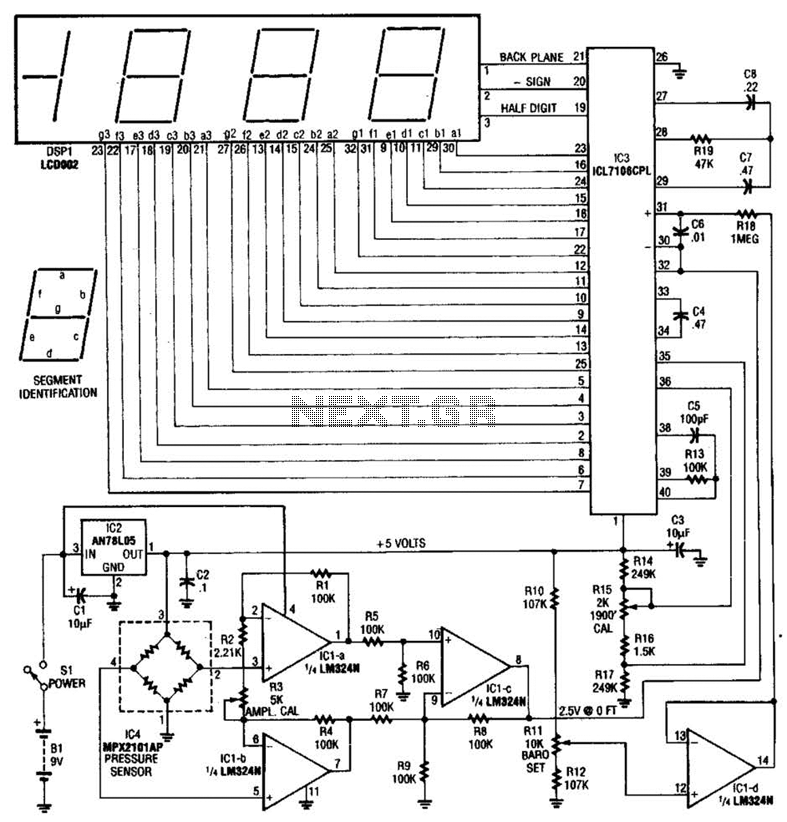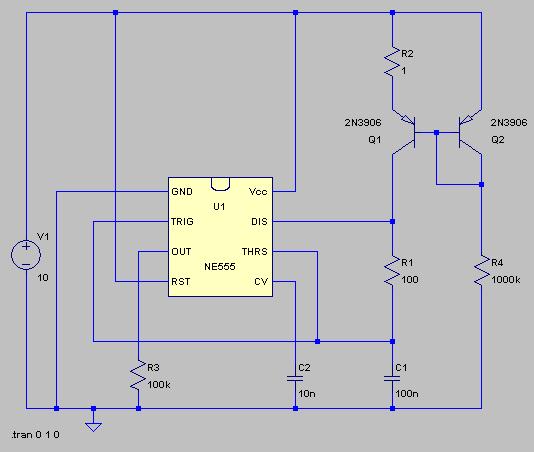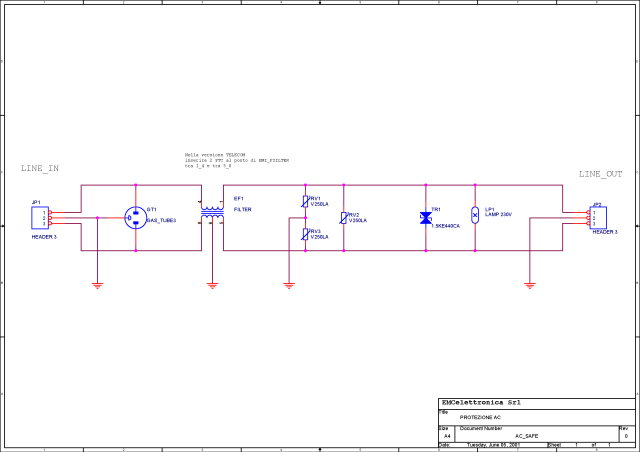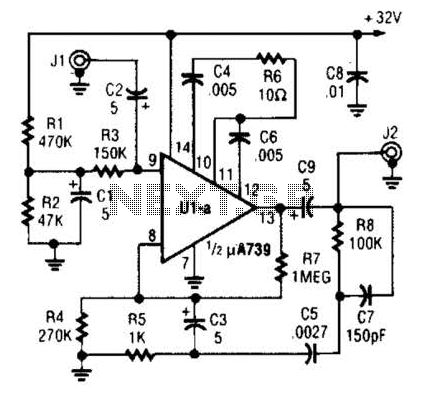
Active Low-Pass Rc Filter Circuit
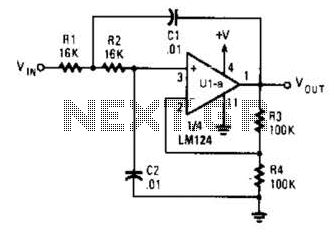
The circuit presented has a cutoff frequency of approximately 1 kHz. The resistors R1, R2, and capacitors C1, C2 can be adjusted to achieve any desired frequency.
The circuit is designed as a filter, likely a low-pass or high-pass filter, where the cutoff frequency is determined by the values of the resistors and capacitors involved. The cutoff frequency (fc) can be calculated using the formula:
fc = 1 / (2πRC)
where R is the equivalent resistance and C is the equivalent capacitance in the circuit. By varying the values of R1, R2, C1, and C2, the cutoff frequency can be modified to meet specific application requirements.
For instance, if a lower cutoff frequency is desired, the values of R1 and R2 can be increased, or the values of C1 and C2 can be increased. Conversely, to achieve a higher cutoff frequency, the resistor values can be decreased or the capacitor values can be reduced.
In practical applications, this flexibility allows the circuit to be tailored for various tasks such as audio signal processing, where specific frequency ranges need to be filtered out or allowed through. The circuit may also include additional components such as operational amplifiers for signal conditioning, or diodes for protection against voltage spikes, depending on the complexity and requirements of the overall design.
The layout of the circuit should be carefully considered to minimize parasitic capacitance and inductance, which can affect the performance at higher frequencies. Proper grounding and shielding techniques should also be employed to ensure signal integrity.
In summary, this circuit's design provides a versatile solution for frequency filtering, with the ability to adjust component values to achieve the desired cutoff frequency, making it suitable for a wide range of electronic applications. The circuit shown has a cutoff frequency at about 1 kHz. Rl, R2, CI, and C2 can be scaled to change this to any other desired frequency.
The circuit is designed as a filter, likely a low-pass or high-pass filter, where the cutoff frequency is determined by the values of the resistors and capacitors involved. The cutoff frequency (fc) can be calculated using the formula:
fc = 1 / (2πRC)
where R is the equivalent resistance and C is the equivalent capacitance in the circuit. By varying the values of R1, R2, C1, and C2, the cutoff frequency can be modified to meet specific application requirements.
For instance, if a lower cutoff frequency is desired, the values of R1 and R2 can be increased, or the values of C1 and C2 can be increased. Conversely, to achieve a higher cutoff frequency, the resistor values can be decreased or the capacitor values can be reduced.
In practical applications, this flexibility allows the circuit to be tailored for various tasks such as audio signal processing, where specific frequency ranges need to be filtered out or allowed through. The circuit may also include additional components such as operational amplifiers for signal conditioning, or diodes for protection against voltage spikes, depending on the complexity and requirements of the overall design.
The layout of the circuit should be carefully considered to minimize parasitic capacitance and inductance, which can affect the performance at higher frequencies. Proper grounding and shielding techniques should also be employed to ensure signal integrity.
In summary, this circuit's design provides a versatile solution for frequency filtering, with the ability to adjust component values to achieve the desired cutoff frequency, making it suitable for a wide range of electronic applications. The circuit shown has a cutoff frequency at about 1 kHz. Rl, R2, CI, and C2 can be scaled to change this to any other desired frequency.
